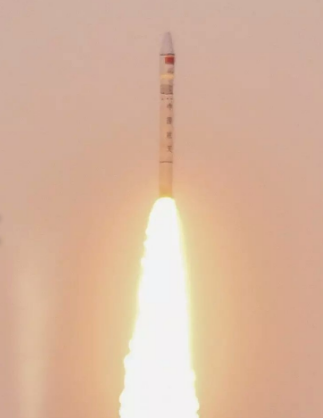On March 2, 2017, China carried out the first launch of a new rocket called the Kaituozhe-2 (KT-2) from the Jiuquan Satellite Launch Center (JSLC). The JSLC was established in 1958 and was China's first launch complex. It is located in the Gobi Desert and is about one thousand miles from Beijing. It hosts two big launch complexes for Long March 2 and Long March 4 rockets as well as ancillary launch complexes for solid fuel rockets such as the KT-2.
The KT-2 rocket carried a TK-1 satellite to Earth orbit. The TK-1 or the New Technology Experimental Satellite will be used for remote sensing. It is a prototype for a family of satellites being developed by China Aerospace Science & Industry Corporation (CASIC) which also developed the KT-2 rocket. The TK family of satellites can incorporate visible, infrared and microwave radiation detectors.
U.S. space surveillance verified two objects in Earth orbit as a result of this launch. One object was the TK-1 satellite and the other object was the upper stage of the launch vehicle which will eventually fall back into the Earth's atmosphere and burn up.
In the past two years, China has introduced three new satellites in the heavy-lifter Long March series which is the heart of the Chinese space program. They have also introduced two new solid fuel rockets that can be used to economically launch small satellites into orbit. Unlike the introduction of many previous new Chinese rockets, the launch of the Kaituozhe-2 was not accompanied by much publicity or information.
The Kaituozhe (Chinese for Explorer) family of rockets began development in 2000 based on the Dong Feng-31 Intercontinental Ballistic Missile. The KT-1 was a small all solid fuel four stage rocket that was designed to carry up to two hundred and twenty pounds worth of payload into a low polar Earth orbit. Although early test launches failed, the KT-1 program did help develop critical components for such small solid fuel rockets.
The KT-2 is an advanced version of the KT-1. It has three stages and can carry a seven-hundred and seventy pound payload into Low Earth Orbit (LEO). It can also launch a five hundred and fifty-pound satellite into an orbit around the Sun. The Chinese government announced that the KT-2 was intended for commercial use. However, they also said that it could be launched from a mobile launcher which suggests possible military use.
China currently has two operational solid fuel launch vehicles. The Long March-11 flew missions in 2015 and 2016. The LM-11 is capable of carrying a seven hundred and seventy pound payload into orbit around the Sun. The Kuaizhou-1/1A is a "quick response launch vehicle" that was introduced earlier this year.
Another rocket that is slated for introduction this year is the Kuaizhou-11. This rocket is said to be capable of placing a twenty-two hundred pound payload into orbit around the Sun. The Chinese hope that the Kuaizhou-11 launch vehicles will be able to carry payloads to orbit at a cost of about ten thousand dollars a kilogram which will make them competitive in the global space launch industry.
Kaituozhe-2 launch:
